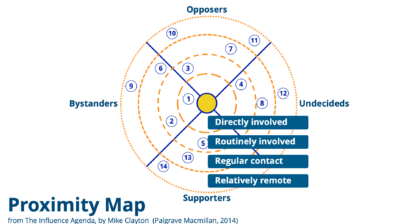
A contract and a project charter might sound similar, but they are not the same. Many organizations overlook the need for a project charter once a contract exists, but each of these documents carries its own value. Keep reading to find out what they are, what they’re for, and how they differ.
Contracts and Project Charters in Practice
Have you ever organized a fun trip for your family or friends? Chances are that you have, or at least participated in the organizing efforts.
Let’s assume that your friends have asked you to arrange a large passenger vehicle (like a minibus) for a day’s jaunt to a nearby tourist place. To do this, you might contact two or three bus rental agencies and enquire about their services. After you are satisfied with the quality of services of your chosen agency, you will ask for a price quote. Lastly, you would negotiate on price and other terms & conditions before finalizing the rental agency. At this juncture, you would sign an agreement with them.
The agreement with the rental agency would include the type of bus, price, payment terms, pickup location and time, drop location and time, and a few other things. This agreement can be considered a contract between you and the bus rental agency.
After signing the agreement, you would inform your friends about the bus and broadly lay out a plan of action. You would ask them to assemble at a particular place on the specific date and time for bus pick up. You will also tell them about the ride time, route, tourist place location, time for coming back, and a few other things.
Sharing information with fellow tourists can be understood as presenting a project charter.
You may have now recognized the difference between a contract and a project charter. Let us dive deeply and formally understand what a contract is and how it differs from a project charter.
What is a Contract?
A contract is a legally binding agreement between two parties. These parties are generally referred to as the buyer and seller. The buyer is also called the client or customer, whereas the seller is called the vendor or service provider.
Examples of contracts include maintenance contracts, employment contracts, rental agreements, purchase agreements, and service agreements. However, in this article, we will stick to project contracts.
A contract can be either verbal or written. However, a written contract is preferable and generally more enforceable than a verbal agreement. A written contract provides clear evidence of what was agreed upon.
A contract should provide the complete details of the legal agreement between these two parties. It must be clear, straightforward, and unambiguous.
The key elements of a contract are:
- Offer: A proposal made by one party (seller) to the other. The proposal must be clear and specific so that it can take the form of a contract. Once the proposal is finalized and both parties agree to it, a contract is formalized.
- Acceptance: Refers to the agreement by the party (buyer) to whom the offer was made. This includes acceptance of terms and conditions.
- Consideration: As part of the agreement, the accepting party (buyer) gives some consideration to the other (seller). The consideration is generally monetary, but it can also take a non-monetary form.
- Terms and Conditions: These cover specific details of the agreement. Among other things, they include the scope of work, obligations and responsibilities of each party, payment terms, delivery schedules, warranties, and procedures for claim settlements. The terms of a contract may be negotiated and can vary depending on the specific circumstances and the needs of the parties involved.
The buyer and seller should keep the following points in mind before drafting and signing a contract.
- Competent people should represent both parties (buyer and seller). They must be of legal age, must have good knowledge of the subject area, and should not be under any duress or undue influence.
- Consideration of the amount and terms & conditions can be negotiated before signing the contract.
- The content of the contract must comply with local laws. No clause in the contract should be prohibited by law.
- The contract wording should be simple, straightforward, detailed, unequivocal, and unbiased.
What is a Project Charter?
I have written about the project charter in detail in my previous post, so let’s just look at a broad overview of the project charter.
A project charter is a document issued by the project initiator or sponsor that formally authorizes a project’s existence and gives the project manager authority to apply organizational resources to the project activities.
The main purpose of a project charter is to formally authorize a project’s Initiation. It is usually bereft of legal jargon.
Generally, the project charter remains internal to the performing organization as both the project sponsor and project manager work for the performing organization.
The key components of a contract are:
- Vision and purpose
- Description
- Objectives
- Deliverables
- High-level scope and requirements
- High-level milestone schedule
- Overall budget
- Initial risks
- Key stakeholders and their respective roles
- Project manager’s name
- Project sponsor’s name and signature
How is a Contract Different from a Project Charter?
Both contracts and project charters are important documents for a project, but they serve entirely different purposes.
A contract is a legally binding agreement between two parties that outlines the terms and conditions of a specific project. It is typically signed between two different legal entities, who are called “buyer” and “seller”.
A contract establishes a relationship between the buyer and seller and ensures that both parties understand their obligations and responsibilities. Contracts are legally enforceable and used to protect both parties’ interests.
On the other hand, a project charter is a high-level document created during the project’s initiation.
A project charter describes the purpose of the project and defines its objective. It gives a high-level overview of the scope, timelines, budget, and deliverables. It acts as a guide for the project team members and project stakeholders throughout the project.
The project charter is not a legally binding document. It is typically used as an internal reference document to ensure everyone involved understands the project’s goals and objectives.
Over to You
In my experience, I have seen many organizations that do not understand the true value of a project charter. They believe a charter is a redundant document if a contract already exists.
Do you think a contract can take place of a project charter? Does a contract give authority to the project manager to use organizational resources?
Does your organization provide access to the contract to everyone working on the project? Let me know in the comments.
Related Content
Back to Basics: How to Create a Project Charter
How to Handle Fixed Price Contracts in Your Project Schedule
Webinar Replay: Protecting Contract Deliverables With Schedule Risk Analysis and Schedule Margin
Elevate your project management skills and propel your career forward with an MPUG Membership. Gain access to 500+ hours of PMI-accredited training, live events, and a vibrant online community. Watch a free lesson and see how MPUG can teach you to Master Projects for Unlimited Growth. JOIN NOW





